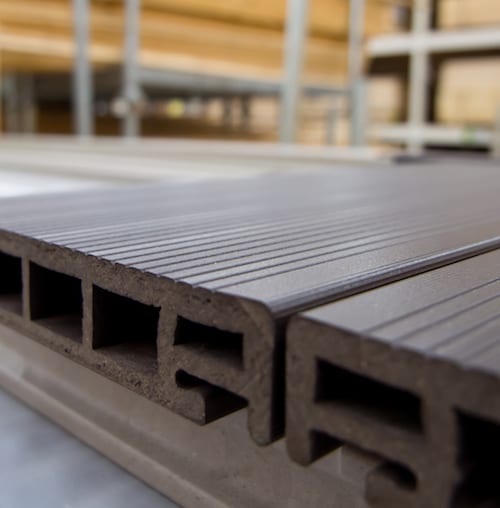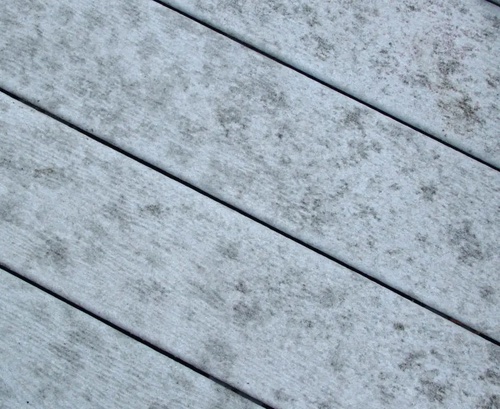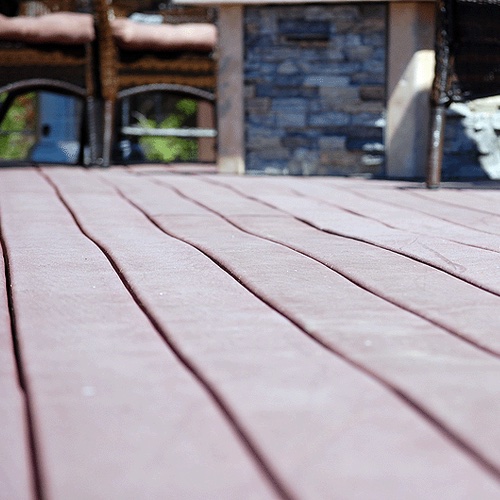
Since I first wrote about the problems with composite decking in 2018 there have been a lot of comments and questions especially recently asking me to update the info and if any of these issues were still true. So, I have fully updated the information with references to new products on the market and changes here in mid-2024. I only hope it helps people make an informed decision.
There are a lot of options for decking today. It’s not like the old days where you had to simply choose between different species of wood. Today, you have all of the wood options of yesterday, but now there are scores of different composite decking options.
If you been a reader of my blog for any amount of time, you’re probably thinking “Oh now, here he goes again bemoaning another modern product.” Well, I want to tell you that that is not the case. I don’t have problems with new products, only subpar ones.
Sadly, most composite decking falls into that category. It has been improving slowly over the years with the introduction of capped decking, and technologies like CoolDeck among other upgrades, but still, the reports from consumers and contractors are not promising. Take a look at some of the websites where homeowners have posted their reviews, and you’ll read 1 and 2 star reviews all day long.
7 Problems With Composite Decking
There are a multitude of problems with composite decking that show up all too often to be just a stray issue for a hard to please homeowner. The accounts of issues are repeated with a frightening regularity and sameness throughout the threads of complaints.
Many homeowners acknowledge the issues, but still prefer the composite decking to traditional wood decks, usually due to the maintenance required for wood decks. Below are some of the issues that crop up most often.
1. Composite Decking is Slippery
In the last few years Trex and Deckorators have release “slip-resistant” versions of their composite decking, and while these are better than the older composite decks they are still far more slippery than a wood deck.
When you put water on top of plastic it is always slippery since it cannot absorb the water like a wood deck can. It’s a just a fact of life that composite decks are still going to be more slippery than wood decks.
There are aftermarket non-slip coatings you can apply to your composite deck. I can’t speak to the effectiveness of these coatings since I haven’t used them myself, but I know they are out there if you are wanting to experiment and find a potential solution to your slippery composite deck.
2. Hotter Than Wood
Composite deck manufacturers have been working on this issue for decades with very little improvement other than marketing spins. Today you’ll find CoolDeck technology from MoistureShield and Transcend Lineage by Trex which “is engineered with heat-mitigating technology to give you our coolest decking yet.*” I had to search for where that asterisk was referenced and here was the answer from their page:
“*Although Trex Transcend Lineage is designed to be cooler than most other composite decking products of a similar color, on a hot sunny day, it will get hot. On hot days, care should be taken to avoid extended contact between exposed skin and the deck surface, especially with young children and those with special needs.”
If you live in a northern climate this might not be an issue for you, but anywhere in the southern US and you likely will suffer from this issue. It’s not just the issue of being hot on bare feet but also the heat that will be radiating from this deck while you sit on it. Summer is hot enough without a deck radiating a ton of heat back at you.
If you still insist on composite decking then choosing white or light grey colors will keep the deck surface cooler, not as cool as wood but slightly lower than the surface of the sun.
3. Tighter Joist Spacing
If you are planning to simply replace your existing wood decking with composite decking you need to be sure that the supporting structure of your deck is sufficient. For wood decks covered with 2×6 or 2×8 boards 24” O.C. joists are not uncommon. Most wood decks using 5/4” decking will require 16” O.C. joists. Composite decking can be different though.
Dan Gileo of Decks & Docks has been working in the decking industry for over 25 years and his recommendation is a minimum of 16” O.C. joist spacing for straight installations, whereas 12” O.C. would be required for diagonal installations to avoid sagging.
Composite decking varies by manufacturer and even though it may be fine for several years at the wider spacing, many installations I have come across begin to sag even with 16” O.C. spacing after the 10-12 year mark. So I would recommend sticking with the 12” O.C. to be safe.
Also, many composite decking materials require 12″ or even 9″ on center stair stringers spacing to support composite stair treads.
The point is make sure you account for the added time and costs of reframing the support structure if you are changing from wood to composite.
4. Mold & Staining

Especially prevalent on older and uncapped composited decking, mold shows up quickly and is more difficult to eradicate than you’d expect. The mold seems to grow heavily not just on the surface, but inside the rough texture of uncapped decking. It seems to come on strong and takes constant effort to keep the decking clear of it, especially for a self-proclaimed “no maintenance” product.
Even with the recent technology improvements mold and algae still shows up quicker than I would expect. Staining is another problem with composite decking. Depending on the landscaping even things as simple as the tannins in fall leaves or berries can permanently stain these composite deck boards so be sure you don’t have issues in your location.
5. Color Fading
Everybody knows color fades in the sun, but composite decking companies seem to be oblivious to what their products are really capable of. Some composite decking has faded so quickly in just a couple of seasons that replacements boards stand out like a sore thumb. Just like the mold, this issue is unpredictable and hard to understand which decking will have problems and which will not.
Trex currently offers a 50-year warranty on their top line decking, but it’s hard to imagine the deck will be anywhere near the same color it was when originally installed. And unlike wood decks where colors can change over the years as you stain them the options for changing the colors on a composite deck are extremely limited.
6. Warping & Shrinking

It’s not wood, so it shouldn’t be expanding and moving the same, right? Right! It actually moves more AND more unexpectedly than wood decks. Some composite decking won’t move a bit and others have been found to shrink, swell, warp, twist, bow, and any other word you want to use in amounts unheard of, even with wood.
Again, it seems completely random when this happens, but it happens often enough that you should know about it. The best explanation is that plastics have greater movement than wood and as materials heat up they expand more. So, with a composite deck that is largely made of plastics and gets hotter than wood decks the movement can be extreme.
7. Sagging Boards
Even if you use the proper spacing composite deck boards are notorious for sagging. Especially the lower end products. The top of the line products have done an excellent job at preventing this today, but there is still enough sagging in the best boards that it makes me uncomfortable using them.
I notice this issue showing up after a decade or more of use, and when it does it usually makes the deck unusable. On my own house I have a composite deck that is 21-years old at this point and the sagging is extraordinary to the point we can’t really use the deck until I have the chance to replace it. Check out the video below to see how springy these boards can really get!
What To Do?
For now, I’d say the best way to avoid problems with composite decking are to avoid it altogether and stick with wood. You may be one of the lucky ones who installs composite decking and gets away with it, or you may end up constantly on the phone trying to persuade them into the honoring their warranty, which is extremely hard to do.
Sure, wood has issues of its own and requires staining occasionally (here’s a great tutorial on staining wood decks) but it’s nothing that will take me by surprise. And if it needs a replacement piece, it’s as easy as swinging by the local lumber yard rather than trying to track down a model that has been discontinued five years ago from a supplier halfway across the country. As for me, I’m sticking with wood. How about you?
Composite decking has come a long way since it first came out, but it’s not there yet. Someday, the industry may be able to create a consistent long-lasting product that lives up to the claims and avoid the problems with composite decking currently, but right now, they can’t seem to make it work. When they can make a product that is consistently better than wood, then I’ll be in line for it, but until then I’m sticking with a reliable option like wood.
If you’re looking for a reliable wood option that has little to no maintenance and can easily last longer than composite decking I would encourage you to check out Accoya. It is not the same as traditional treated lumber and is perfect for a deck even in the toughest elements.
Subscribe Now For Your FREE eBook!

Founder & Editor-in-Chief
I love old houses, working with my hands, and teaching others the excitment of doing it yourself! Everything is teachable if you only give it the chance.

